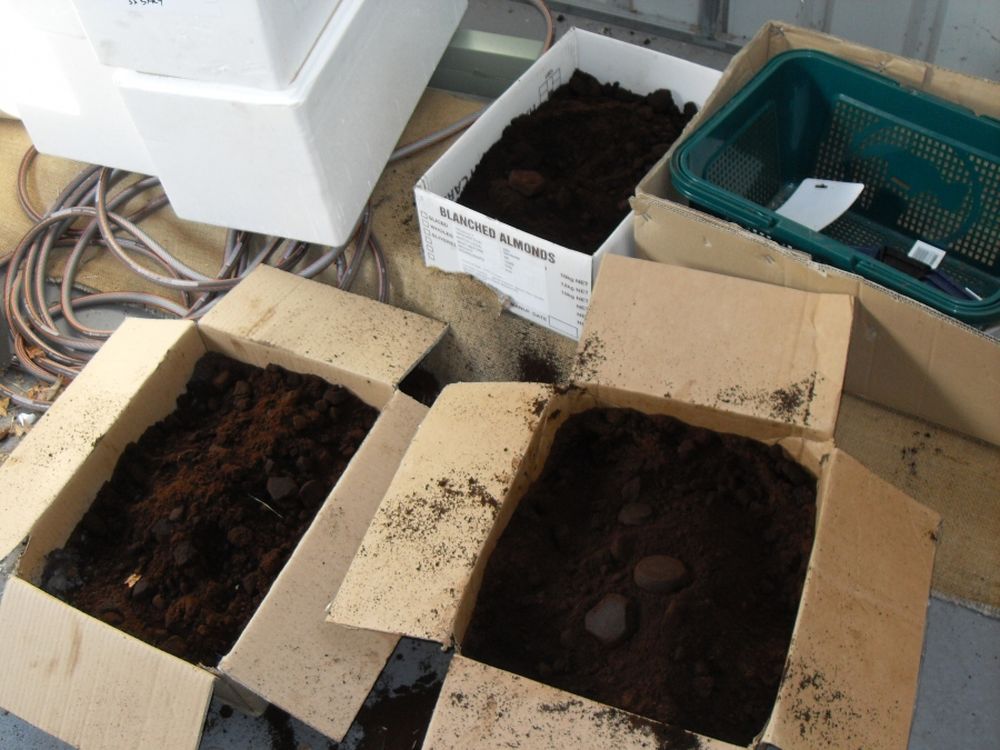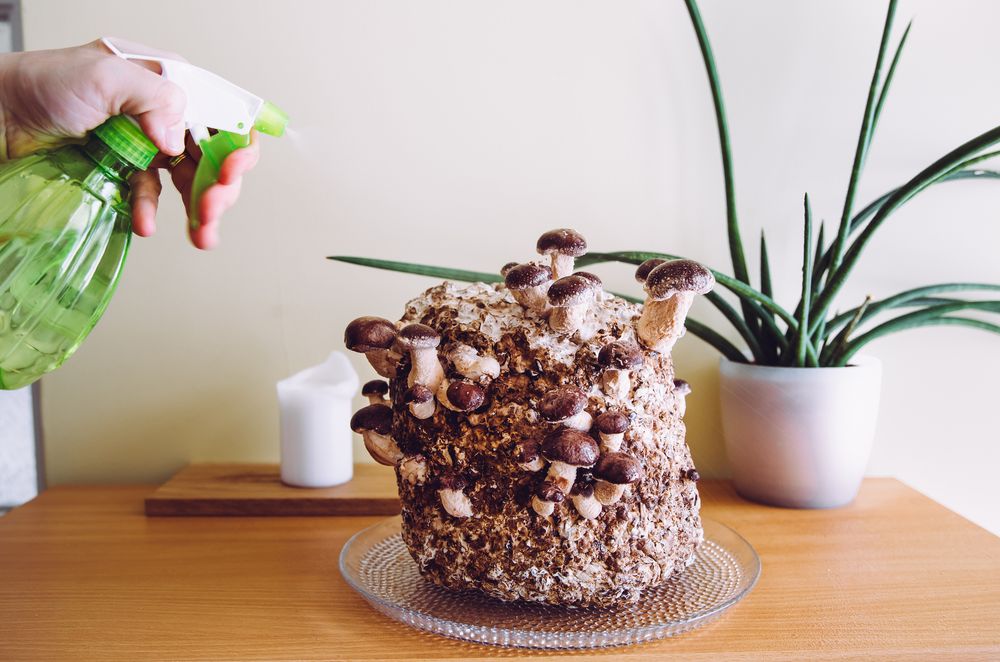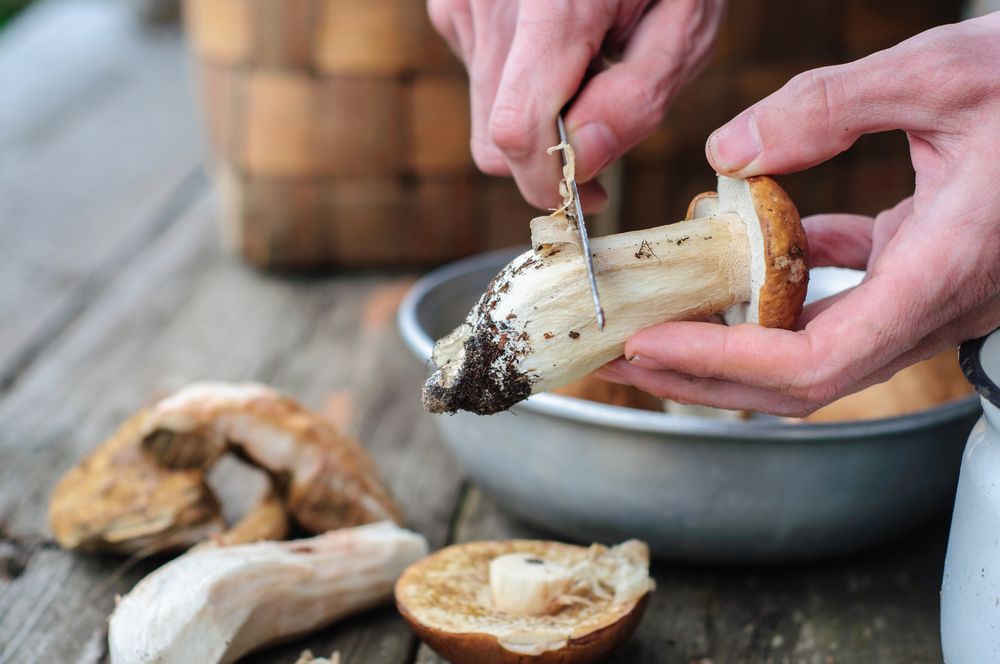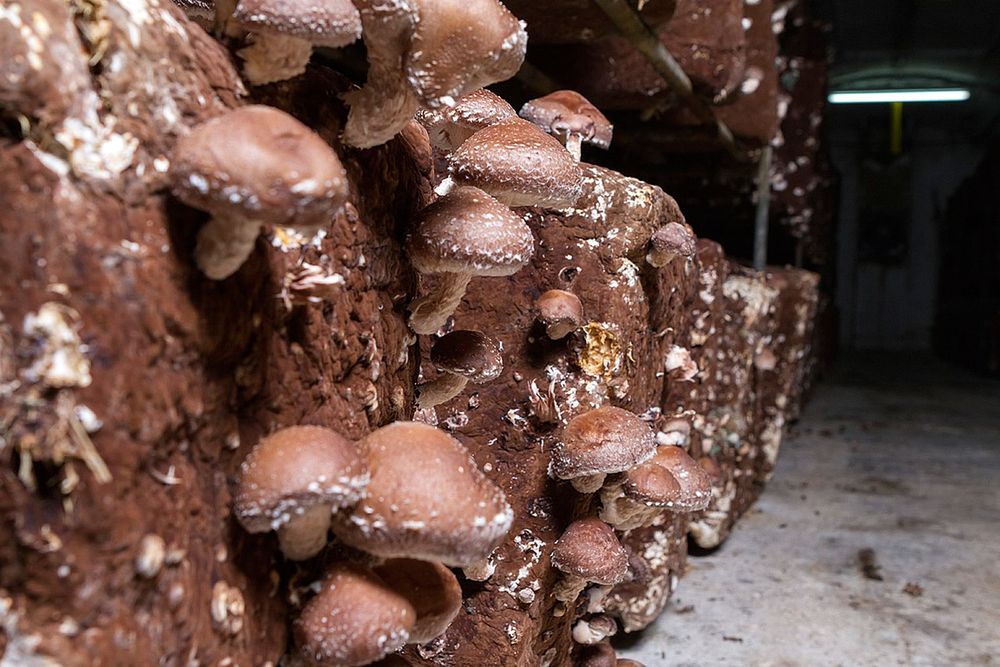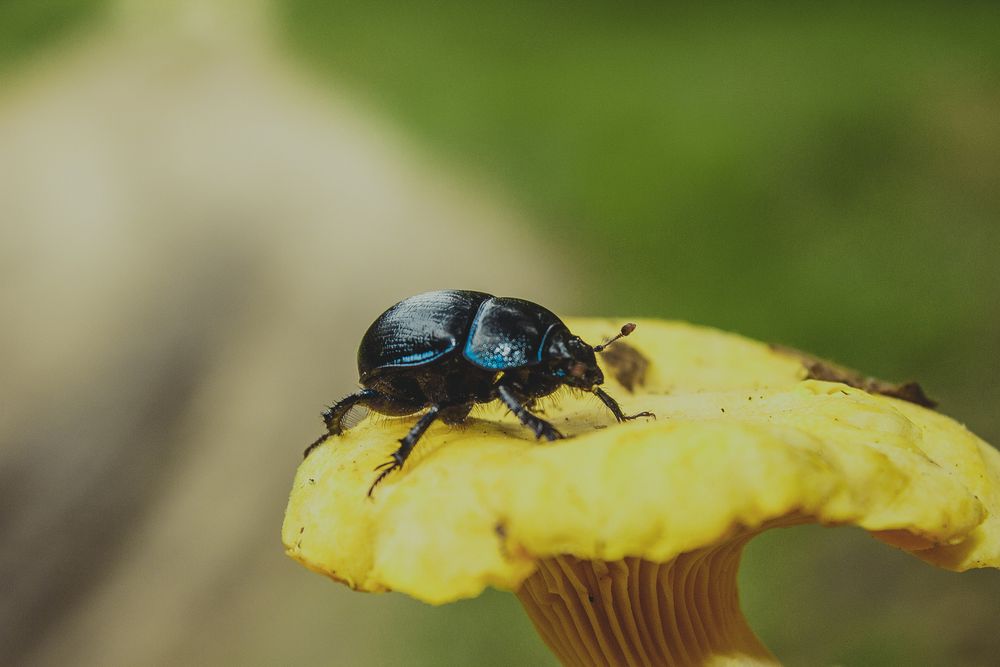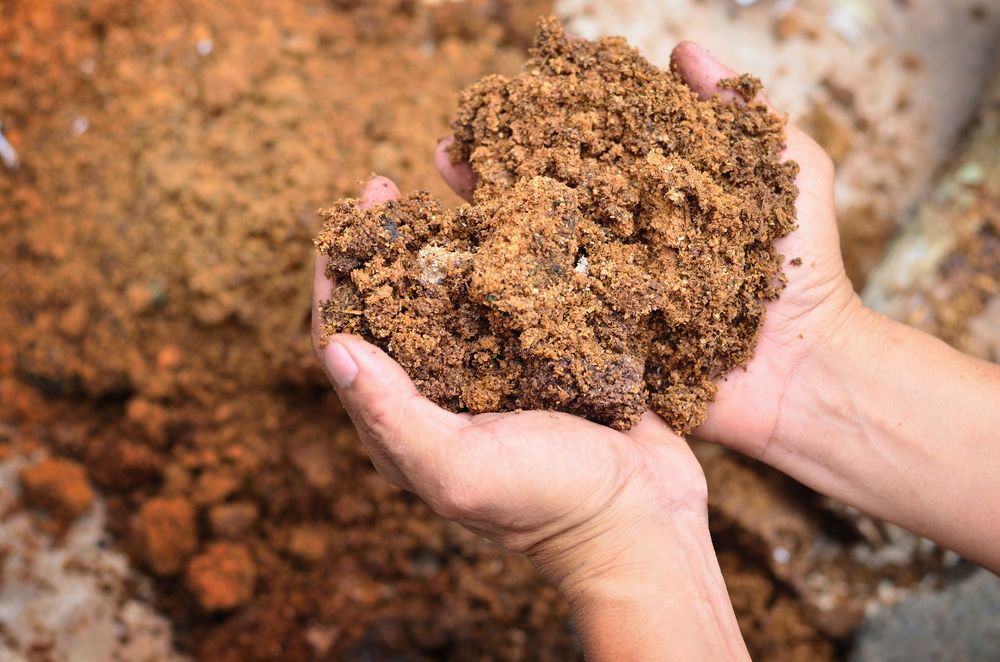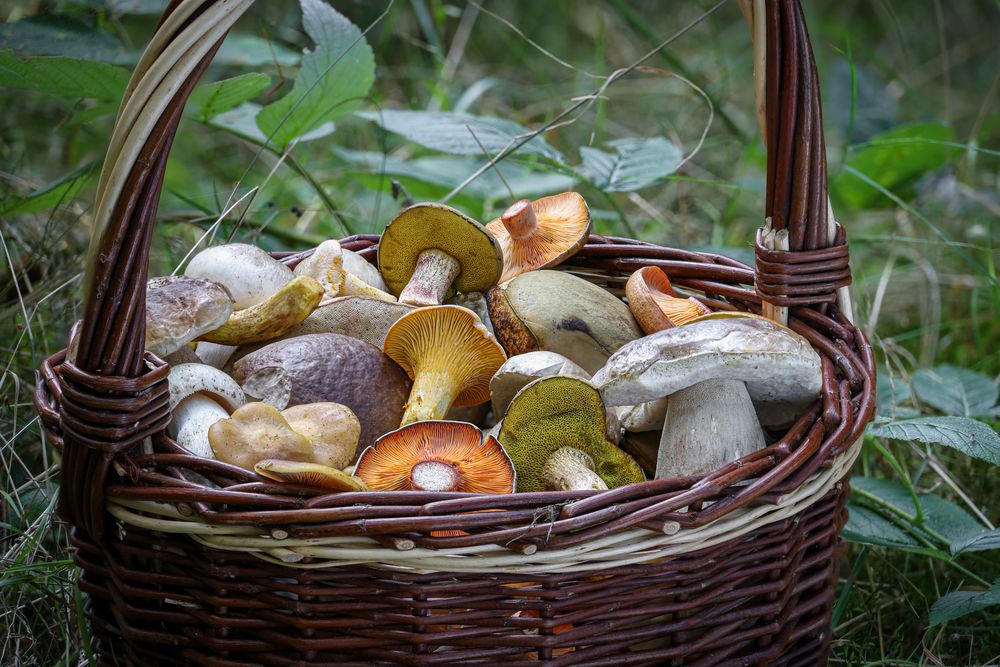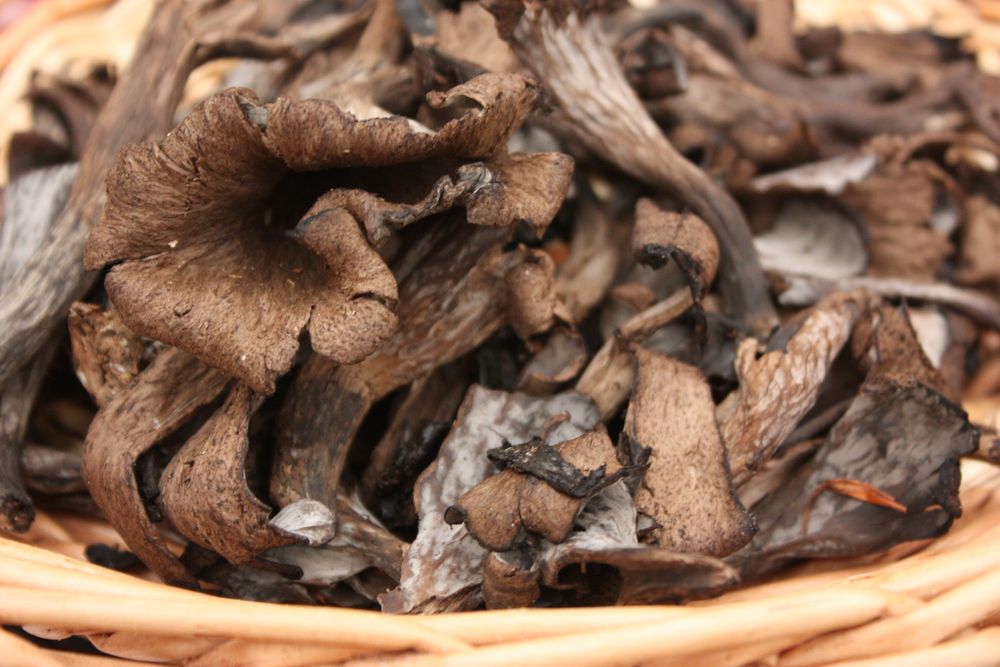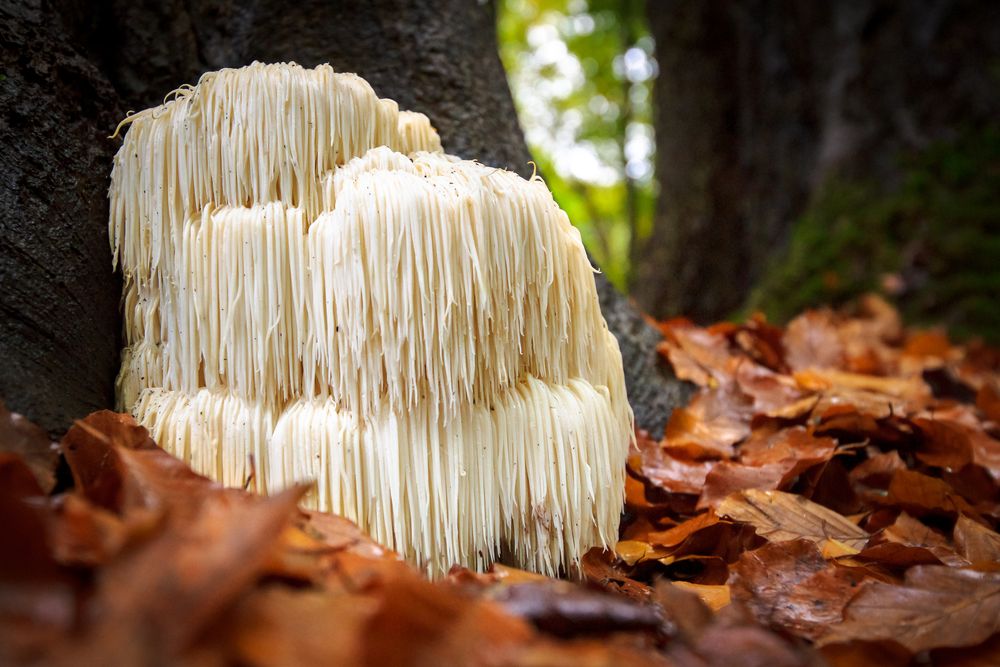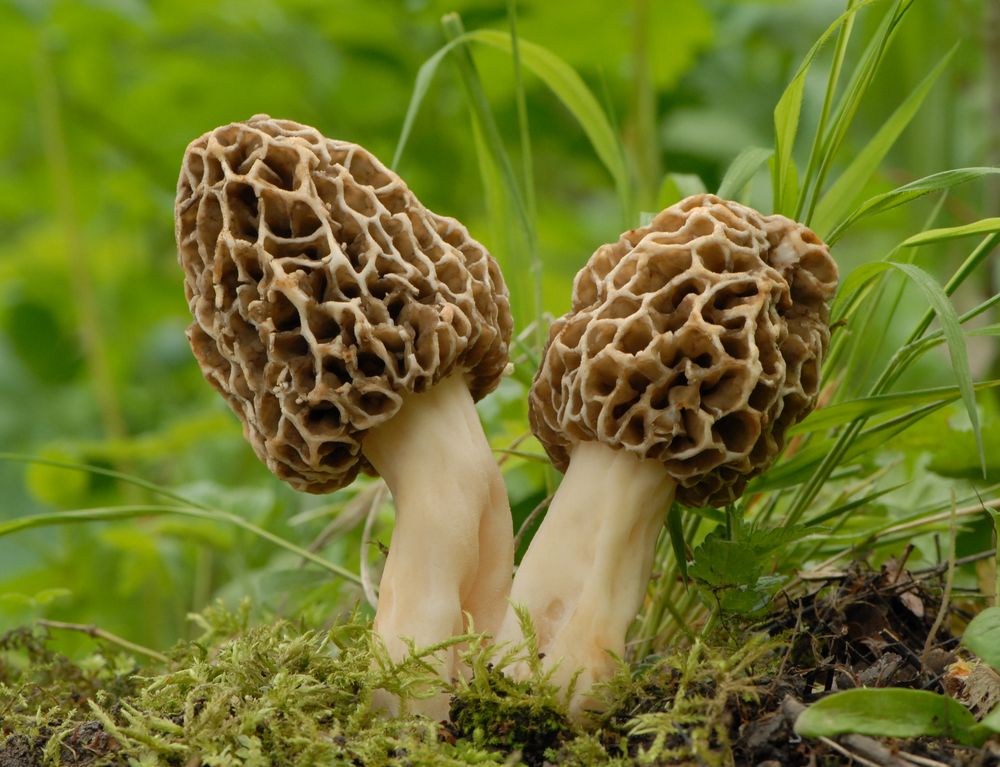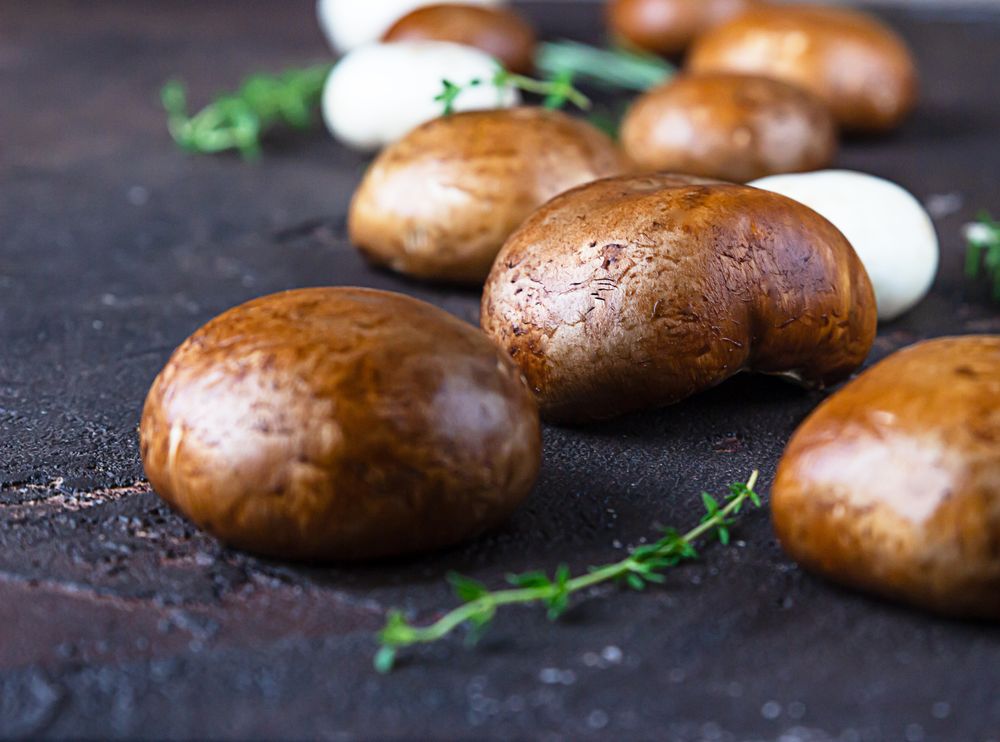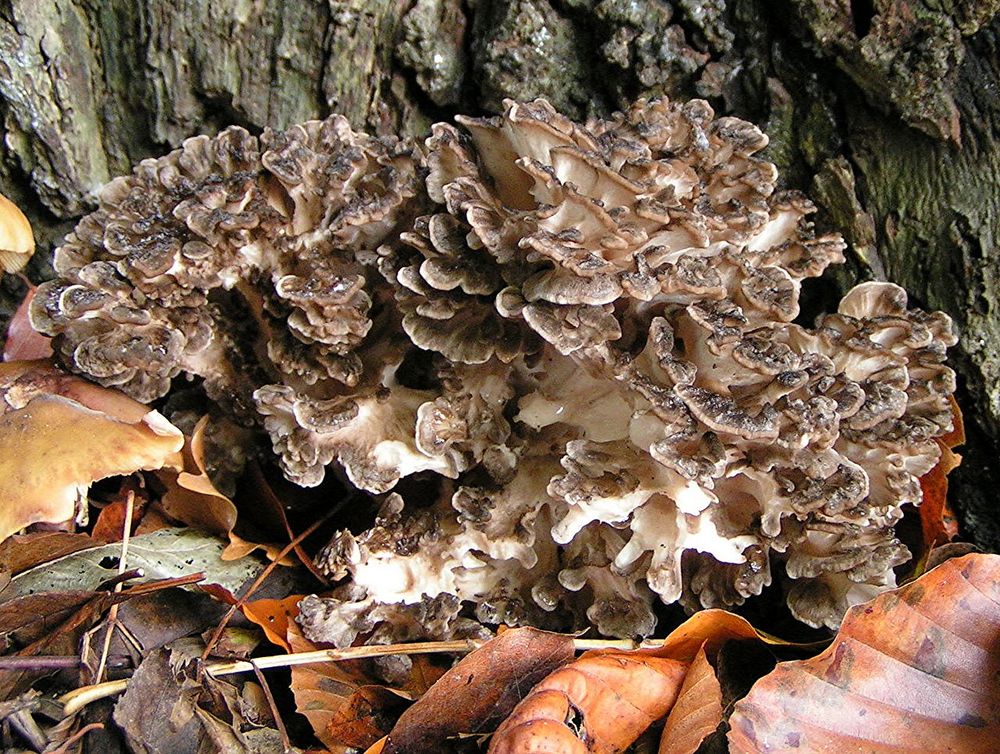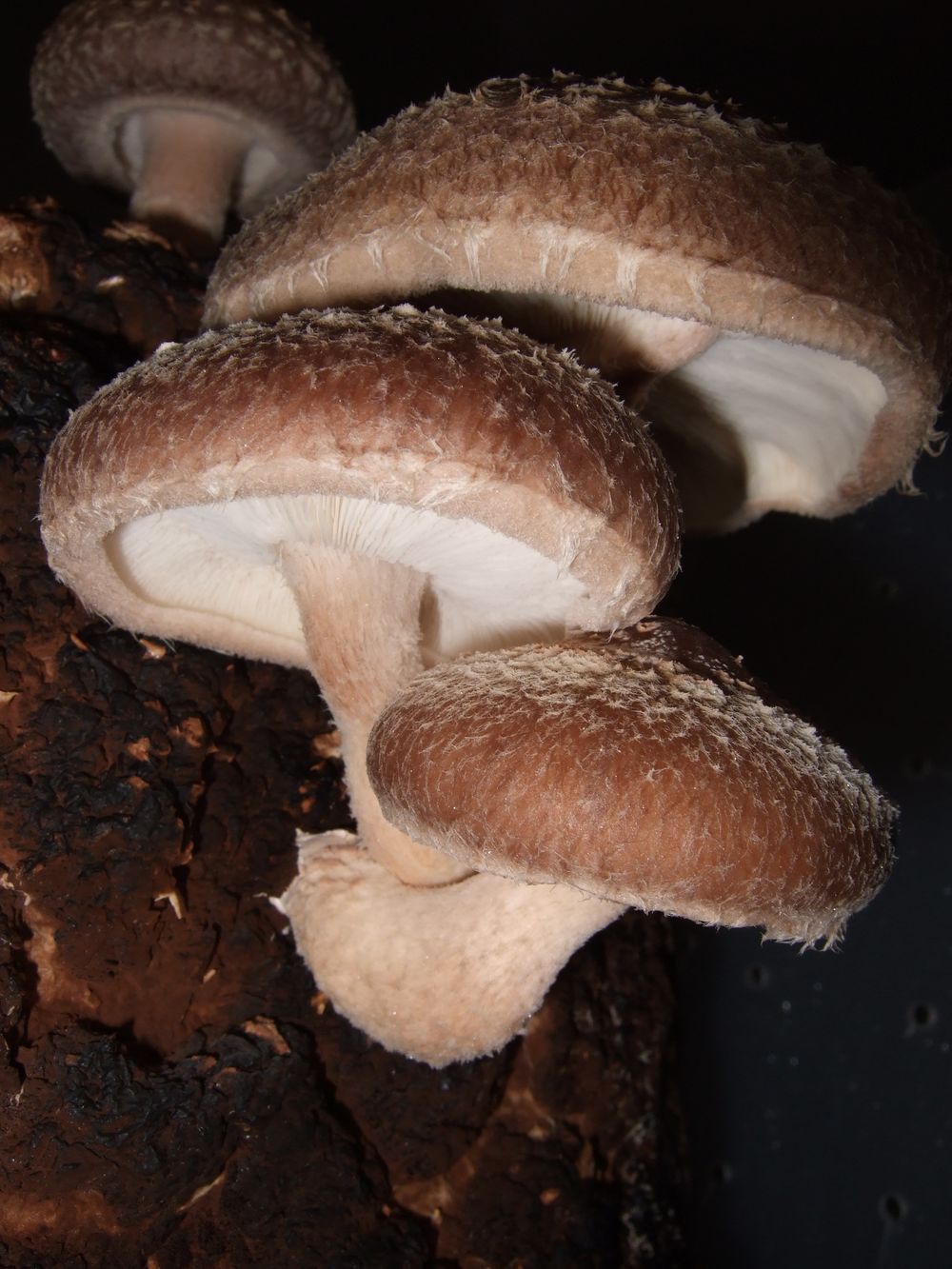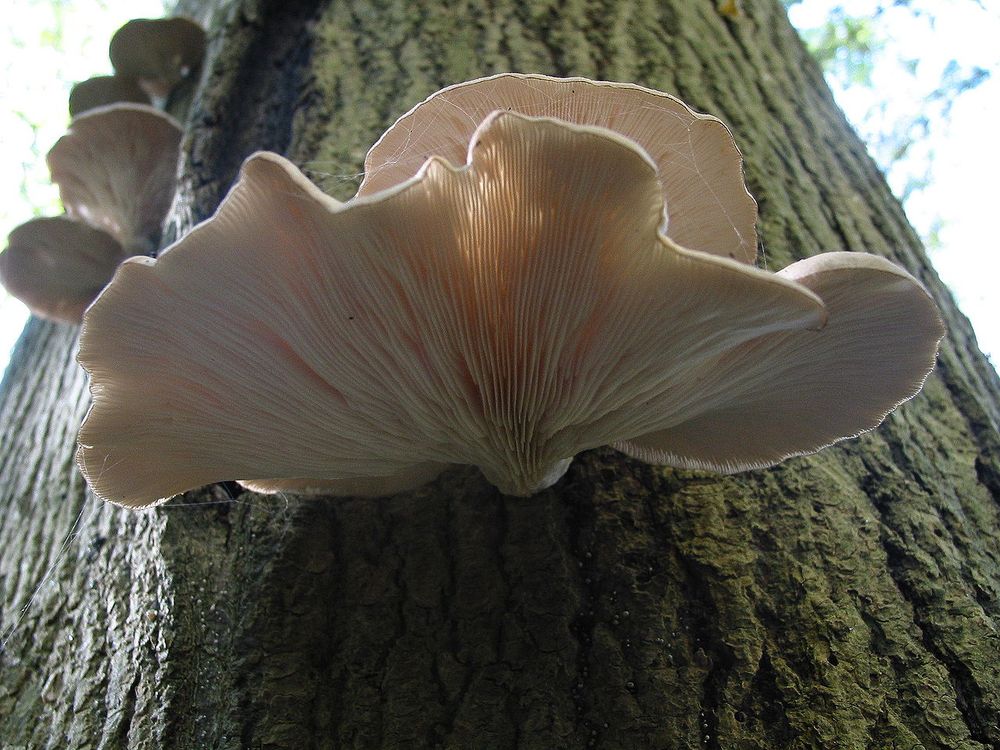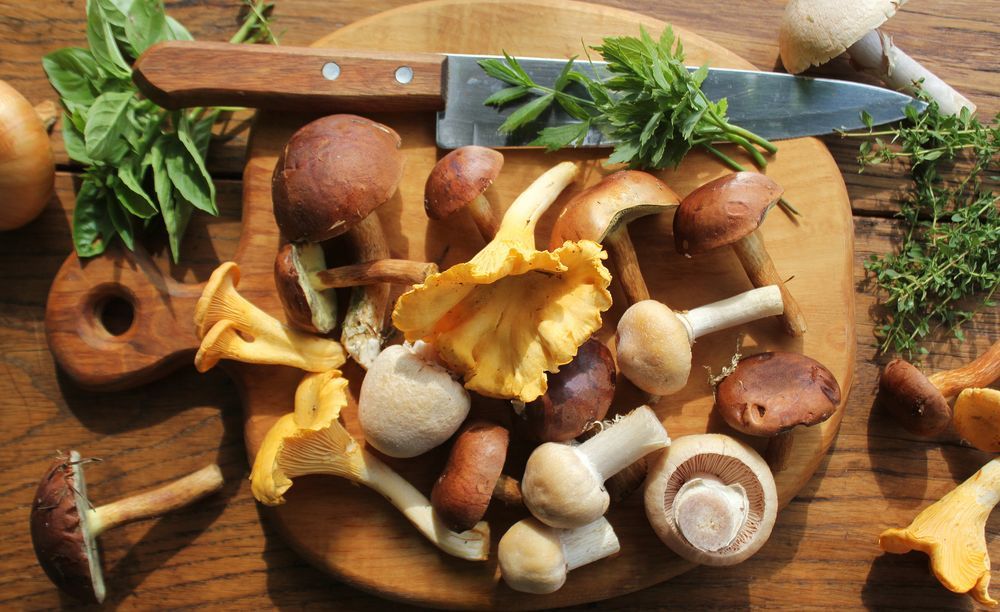How to Grow Mushrooms: Types of Mushrooms, Growing Tips
Although most people get their mushrooms from the grocery, you can learn how to grow mushrooms easily, save money, and share this genuine experience with your family. Keep reading to find out more.
Mushrooms are a unique type of fungus and a valuable food source. Besides adding variety to your diet, you can use mushrooms for medicinal purposes.
They are a rich source of antioxidants, vitamins, and minerals, and they help boost the immune system and improve cognitive function.
Mushrooms can also be a valuable addition to any garden, as they help break down organic matter and introduce essential nutrients into the soil.
By following the steps outlined in this article, you can learn everything about how to grow mushrooms at home. It’s not easy since you have to meet specific requirements for temperature, humidity, air circulation, and other aspects.
But first, let’s discover the best types of mushrooms to grow.
Table of Contents
Best Types of Mushrooms to Grow
Your first step is deciding what kind of mushrooms you want to grow. Luckily, many varieties are available through specialty nurseries or online distributors. Or you can culture wild mushrooms from spores or by cloning fragments from the stem of another mushroom.
Oyster
Oyster mushrooms (Pleurotus ostreatus) are popular among cultivators for many reasons. Most importantly, they grow quickly and fruit very heavily compared to other varieties. Once fully fruiting is over, you can harvest much more from a given amount of substrate than with most other types of mushrooms.
This makes them an excellent mushroom to choose if you want to make money as a cultivator or if you want lots of mushrooms for your own use. In addition, the oyster mushroom variety produces two crops per year instead of one, like in most cases. It makes it possible to start harvesting three months after spawning the initial substrate.
These mushrooms have a mild, delicate flavor that goes great with all sorts of dishes. You can use them for everything from soups to stir-fry. And they are delicious when dried or pickled.
How to Grow Oyster Mushrooms
Oyster mushrooms are some of the easiest mushrooms to grow, and a great way for a beginner to start. Although you can readily find them in stores, it’s cheaper to grow them yourself.
Growing oyster mushrooms is possible with the help of various wood types, so the first step is finding out what type of wood is available to you. You can try different ways to grow oyster mushrooms at home, like using old or rotten logs, stumps, coffee grounds, a still-air box, sawdust, or straw in a plastic bag.
Oyster mushrooms thrive in humid environments, so make sure to keep the substrate moist but not wet. Another essential thing to remember is that they need plenty of air circulation. This means you should always keep your logs or substrate loose, not tightly packed.
Shiitake
Shiitake mushrooms (Lentinula edodes) are a distinct variety that is commonly dried and used in Asian cooking. The mushroom has been very popular for thousands of years, primarily due to its health benefits and rich, earthy flavor. It’s a good source of protein and antioxidants.
Shiitakes contain many powerful nutrients such as vitamins D and B-complex and minerals, including iron, zinc, copper, potassium, selenium, and phosphorus.
The medicinal benefits of the Shittake mushroom are vast. It can reduce blood pressure, lower cholesterol, and prevent cancer. It also has anti-viral properties that help treat symptoms of AIDS. Plus, this mushroom has long been prized for its anti-cancer properties.
How to Grow Shiitake Mushrooms
Shiitake is a versatile fungus that can be grown indoors or outside on logs, making it even more attractive to those who like to grow their own food! It requires a lot of moisture.
The logs must be kept moist at all times, including after the mushrooms appear, as Shiitake tends to grow in humid climates. It prefers a temperature of about 70 degrees Fahrenheit (21 degrees Celsius), but it can grow at a range of 50 to 80 degrees Fahrenheit (10 to 27 degrees Celsius).
Shiitake mushrooms are not difficult to grow. The easiest way is by purchasing a Shiitake mushroom growing kit, which you can find at most gardening stores. You have to drill holes in your log, drop the spawn into the holes, stack them together, and keep them moist.
Growing Shiitake mushrooms is also possible using spores, but it is more challenging since you have to create a sterile environment and be very careful not to contaminate the spores.
Maitake
The Maitake mushroom (Grifola frondosa) grows wild in Europe, Asia, and North America. It is a prized edible mushroom with a delicious, nutty flavor. This mushroom is often used in soups and stews, stuffings, potato dishes, casseroles, omelets and scrambled eggs, pasta dishes, pizzas, and breaded cutlets.
Maitake resembles the Shiitake variety in several aspects. The biggest difference between the two is that the Maitake grows at the base of trees while the Shiitake grows on tree trunks. These mushrooms are also nutritionally dense, providing essential vitamins and minerals such as potassium, vitamin B2, and copper.
How to Grow Maitake Mushrooms
Maitake mushrooms are relatively easy to grow, making them a great choice for rookies. If you want to grow them indoors, it’s best to establish a fruiting area and maintain it. You’ll need a grow light, humidity dome or tent, and substrate.
The substrate can be made of a variety of materials, including sawdust, straw, and coffee grounds. Meanwhile, you should keep the fruiting area between 75 and 80 degrees Fahrenheit (24 and 27 degrees Celsius) during the day, with humidity levels of around 85-90%.
Humidity
It also helps to spray water on the substrate once per day, ideally early in the morning so that there is time for it to dry out before nightfall. Keep in mind that it’s always better to err on the side of dryness.
Maitake mushrooms have a tendency to bolt if you surface-sow them or place them in an area that is too wet. Sinking your substrate into a pile makes this much less likely because the mycelium has a chance to establish itself before fruiting.
Reishi
The Reishi mushroom (Ganoderma lingzhi) is one of the oldest and most revered mushrooms in history. Also known as Ling Zhi in Chinese, it has been used medicinally for over two thousand years. You can find it growing on dead wood or in the soil, eat it fresh or dry, and even brew it into tea.
The mushroom is reddish-brown to black and has a hard, woody texture. It is known to be an immune system stimulant, anti-inflammatory, anti-viral, and liver protective agent. It can also inhibit the growth of cancer cells.
How to Grow Reishi Mushrooms
If you’re interested in growing Reishi mushrooms, you can easily do this at home, either indoors or outdoors. They enjoy cool air temperatures but do not like extreme cold. You should mist them regularly while waiting for them to grow.
As far as the substrate is concerned, you can use sterilized sawdust bought from any garden center. Just be sure to use the sawdust from untreated lumber and not glue-laminated wood, as the lamination process will kill the mycelium.
Reishi mushrooms do not need compost or any other substrate than sawdust to grow, but they will fruit better if supplemented with another source of carbohydrates. You can use either wheat bran or steamed brown rice.
Fruiting, Humidity, and Temperature
However, you should not expect much fruit from indoor-grown Reishi mushrooms since they need plenty of light and natural air currents to produce even mediocre harvests. It’s best to grow them outside unless you have an extremely well-lit spot at home.
A basement is a perfect place to grow and cultivate Reishi mushrooms since they thrive in cool and humid conditions. However, unlike other varieties, Reishi needs a few hours of direct sunlight a day during the summer months.
The best fruiting temperatures are between 60 and 75 degrees Fahrenheit (15 and 24 degrees Celsius), but they can withstand warmer conditions too. In wintertime, the temperature should be reduced at night to help induce fruiting.
Portobello
The Portobello mushroom (Agaricus bisporus) is the mature form of the common white Button mushroom. It is a large, flat mushroom that has a rich flavor and meaty texture. This variety is often used in recipes as a replacement for chicken or beef.
Additionally, the Portobello mushroom can be used as a vehicle for other ingredients. For example, you can stuff it with cheese, vegetables, or meat. It can also be used as the cap for a mushroom dish.
How to Grow Portobello Mushrooms
Portobello is grown in the same way as other mushrooms. The most important factor is to provide the correct growth environment, which includes the temperature, humidity, and air circulation.
The first step is to select a location for growing the mushrooms, whether it’s indoors or outdoors. It should be dark, dry, and cool. The ideal temperature range is between 60 and 70 degrees Fahrenheit (16 and 21 degrees Celsius), so it’s best to avoid areas that are too hot or too cold.
The mushrooms will grow in either direct sunlight or indirect light. If you’re trying to grow them indoors, you can use a combination of fluorescent and incandescent lights.
You don’t want to add too much water or the substrate will become anaerobic (lacking in oxygen) and produce unpleasant odors. For this reason, the substrate should be kept moist but not wet.
Air circulation is also important to keep the humidity in check when growing portobello mushrooms. Make sure that you provide ventilation to remove any excess moisture and heat.
Fresh Portobellos have a short shelf life, so be sure to consume them within three days after harvesting. If you need longer storage time, freeze or dry your mushrooms before placing them in an airtight container and storing them in your pantry.
Morel
The Morel mushroom (Morchella esculenta) is a highly sought-after delicacy found in the wild during the spring. It has a unique, honeycomb-like appearance and a rich, earthy flavor.
Morel mushrooms are an excellent source of dietary fiber and minerals, such as iron and magnesium. They also contain more than ten different vitamins, including vitamin A, niacin, and riboflavin.
The best way to get the most benefits from eating morels is to eat them fresh out of the pan after frying them up in a bit of butter. If they’re not available fresh at your local market, you can find dried versions online or in many gourmet shops.
How to Grow Morel Mushrooms
Morel mushrooms can be grown either indoors or outdoors using a Morel mushroom growing kit or composted hardwood sawdust mulch. The ideal growing temperature is between 65 and 75 degrees Fahrenheit (18 and 24 degrees Celsius). During the colder months, it’s recommended that you keep the temperature no lower than 60 degrees Fahrenheit (16 degrees Celsius).
Since morels fruit only in the springtime, they shouldn’t be grown indoors since you won’t have a warm enough environment during other seasons. For this reason, it’s easiest to grow them outdoors in your backyard or on your patio.
If you’re growing Morel mushrooms outdoors, you’ll need to provide some type of shelter from rain and wind. You can use a simple tarp or build a small greenhouse-type structure.
Fruiting and Humidity
Fruiting chambers aren’t necessary for growing these mushrooms outside since their mycelium will colonize the substrate quickly and provide an ideal fruiting environment to produce sizable harvests under different weather conditions. However, if you’re growing Morel mushrooms at home, you can use bags, boxes, or Styrofoam coolers as fruiting chambers.
Be sure to keep the substrate moist but not wet by using a misting bottle or by lightly spraying water over the surface. Too much water will make it difficult for the mushrooms to grow.
Once the mushrooms have grown, you can either eat them fresh or dry them for later use. Morels have a shelf life of up to one year if dried and stored in an airtight container.
Lion’s Mane
The Lion’s Mane mushroom (Hericium erinaceus) is a type of edible fungus with a long, cascading tail and a thick, shaggy cap. It’s native to North America, Asia, and Europe.
This mushroom is a rich source of dietary fiber, protein, B vitamins, antioxidants, and polysaccharides, which promote a healthy immune system. It’s also high in Ergothioneine (ET), considered one of the most potent antioxidants discovered to date.
Lion’s Mane mushrooms can be eaten fresh or dried. They have a slightly sweet taste, and you can use them in many different recipes, such as soup, pasta dishes, and even desserts. Thanks to its unique texture that resembles meat, Lion’s Mane is an excellent meat replacement for vegetarians.
How to Grow Lion’s Mane Mushrooms
Lion’s Mane mushrooms can be grown either indoors or outdoors using a growing kit or sawdust logs. It’s fairly easy, although it might be challenging for beginners to tell when the mushroom is ready for fruiting due to its ultra-fine mycelium.
The ideal temperature for growing Lion’s Mane mushrooms is between 68 and 86 degrees Fahrenheit (20 and 30 degrees Celsius). Plus, you have to maintain air humidity between 85 and 90%. Although it’s possible to grow the mushroom in various climates, Lion’s Mane prefers cooler temperatures.
If you decide to grow Lion’s Mane on logs, you must wait between 1 and 2 years after inoculation to harvest the first batch. However, the growing time significantly decreases to 1 month when using mushroom grow bags or containers with a hardwood substrate.
Enoki
The Enoki mushroom (Flammulina velutipes) is a type of edible and medicinal mushroom typically used in Japanese cuisine. It has a long, slender stem and a small, delicate cap.
This mushroom is a good source of dietary fiber, B vitamins, niacin, pantothenic acid (vitamin B5), thiamine, antioxidants. It also has cancer-fighting properties, supports heart health, improves brain function, and enhances immunity.
Enoki mushrooms have a mild flavor, crunchy texture, and slightly earthly taste. You can eat them raw or cook them for stir-fry, soup, or stew. It’s best used as an ingredient in cooked dishes because its texture becomes rubbery when exposed to high temperatures.
How to Grow Enoki Mushrooms
Enoki mushrooms grow naturally on dead trees throughout Asia. However, the commercial version is usually grown on bags of sawdust or bran rather than tree trunks due to the labor-intensive nature of harvesting Enoki from living trees. The white color is caused by their growing in an environment without light.
The optimum temperature range for growing Enoki mushrooms is between 55 and 75 degrees Fahrenheit (13 and 24 degrees Celsius). The growth rate will slow down dramatically at lower temperatures and cease completely at higher temperatures.
Furthermore, Enokis prefer a humidity level above 98%; a complete lack of humidity causes the caps to curl up tightly around the stem. They can be grown using liquid or solid substrate cultures made from rye, wheat bran, or sawdust.
Inoculation and Humidity
It’s best to inoculate the culture medium with mushroom spawn that has been previously incubated for 15-20 days. And you should pasteurize the bags of medium at 140 degrees Fahrenheit (60 degrees Celsius).
Enoki mushrooms will fruit when exposed to very specific conditions: a combination of cold air and high humidity in the form of fog or mist. These conditions are found naturally in late fall and early winter in large greenhouses. This gives Enoki an advantage over other mushrooms such as Shiitake since it cannot produce when grown under these harsh conditions.
Because they require high humidity and only grow well in moderate temperature ranges, Enoki mushrooms can be more expensive than other common varieties. However, they are a favorite in Asian cuisine and are increasing in popularity in the United States.
Button
The Button mushroom (Agaricus bisporus) is one of the most commonly consumed and commercially cultivated edible mushrooms globally. They have a mild, nutty flavor and firm texture. Their caps are round with a smooth, flat surface that ranges from a light tan to a dark brown color.
Button mushrooms contain about 20% protein, 15% carbohydrates, 2% fat, and 1.5% ash on a dry-weight basis. They are also a good source of B vitamins, riboflavin (vitamin B2), pantothenic acid (vitamin B5), niacin, dietary fiber, and minerals such as potassium, phosphorus, and selenium. Plus, these mushrooms are low in cholesterol and saturated fat, making them a healthy addition to your diet.
How to Grow Button Mushrooms
You can grow Button mushrooms on compost or straw indoors or outdoors using a growing kit or mushroom bed with sawdust logs, for example. Cultivating them is considerably more challenging than other types of edible fungi due to their highly sensitive growth cycle and specific temperature requirements.
The button mushroom’s high adaptability allows it to grow under different climatic conditions, so it’s possible to produce them all year round. They grow best in temperatures between 64 and 77 degrees Fahrenheit (18 and 25 degrees Celsius) with a relative humidity of around 90%. The fruiting body will appear within 10 to 15 days if the temperature and humidity are correct.
It’s also possible to grow button mushrooms on cardboard or other recycled materials. The mycelium will consume the cellulose in the material and produce mushrooms. However, this process can take several months.
Chanterelle
The Chanterelle mushroom (Cantharellus cibarius) is a wild mushroom popular in French and Italian cuisine. It has a mild, fruity, peppery flavor and a firm texture. The cap is funnel-shaped with wavy margins. Meanwhile, the color ranges from light yellow to orange to deep red.
Chanterelles are rich in protein, essential fatty acids, B vitamins, and minerals such as potassium, phosphorus, and zinc. They are also low in cholesterol and saturated fat. Also, if you expose them to sunlight, raw chanterelles become a rich source of ergocalciferol (Vitamin D2).
How to Grow Chanterelle Mushrooms
You can grow Chanterelle mushrooms outdoors on logs or stumps using saw spawn or plugs. Their preferred wood species are birch, oak, beech, Douglas fir, and spruce. You can also cultivate them indoors on sterilized sawdust or straw.
The ideal temperature range is 64 to 77 degrees Fahrenheit (18 to 25 degrees Celsius), and the mushrooms will fruit within 2 to 4 weeks. Chanterelle produces fewer spores than other mushroom types, and it might take several years before anything starts to grow.
The humidity should be kept high (between 95 and 100%) for best results. Chanterelles are very sensitive to changes in humidity, so it’s important to keep a close eye on the moisture level of the growing medium. Air circulation should also be adequate to prevent the development of fungal diseases.
Cultivating chanterelles is challenging, but the results are well worth it. These mushrooms are not as adaptable as other varieties, so take care to maintain the correct temperature and humidity levels.
Porcini
The Porcini mushroom (Boletus edulis) is a wild mushroom popular in European cuisine, particularly in Italy. It has a meaty texture and a rich, earthy flavor similar to hazelnut. The cap is convex with a smooth surface, ranging from yellow to brown to reddish-brown.
Porcini mushrooms are high in protein, carbohydrates, and essential fatty acids. They are also a good source of B vitamins and minerals such as potassium, phosphorus, zinc, and selenium. Plus, the fungus provides a rich amount of ergothioneine and glutathione, which protect cells from oxidation and aid enzymes in collagen production.
The Porcini mushroom is also low in fat and cholesterol and contains no sodium or sugar. It’s very nutritious but doesn’t spoil as quickly as other varieties, so it can be preserved for several weeks after harvesting as long as you keep it at around 41 degrees Fahrenheit (5 degrees Celsius).
How to Grow Porcini Mushrooms
Porcini mushrooms can grow on logs using sawdust spawn or plug spawn. Their preferred wood species are birch, oak, and cherry. You can also grow them on straw beds indoors or outdoors.
Porcini requires a warm temperature between 64 and 81 degrees Fahrenheit (18 and 27 degrees Celsius). Unlike most mushroom varieties, the porcini prefers a cool temperature between 50 and 68 degrees Fahrenheit (10 and 20 degrees Celsius) during the early stages of growth. However, it is susceptible to changes in humidity, so ensure that conditions are damp but not too humid.
Porcini mushrooms take around 2 months to fruit after spawning. They produce fewer spores than other types, so propagation can take several years if you’re using sawdust spawn or plugs. Air circulation should also be adequate to prevent the development of fungal diseases.
Black Trumpet
The Black Trumpet (Craterellus cornucopioides) is a wild mushroom popular in American and European cuisine. It has a delicate, earthy flavor and a soft, mealy texture. It acquires black truffle notes when dried. The cap is funnel-shaped with wavy margins and black or dark grey.
Black Trumpet mushrooms are high in protein and essential fatty acids, as well as B vitamins and minerals such as potassium, phosphorus, and zinc. They are also low in cholesterol, fat, and sodium. Its anti-inflammatory properties help protect cells from oxidation and aid enzymes in collagen production.
It also possesses some antioxidant activity. However, the Black Trumpet is only available for a few weeks during spring and early summer, which makes it a poor choice as a staple food.
How to Grow Black Trumpets
It is challenging to grow Black Trumpet mushrooms since they can’t be grown on logs or wood like other species. Instead, they grow out of the ground. Pick a place that’s dark, warm, and that will remain undisturbed while the mushroom grows.
It’s a good idea to moisten coffee filter paper and add it to sterilized compost or sawdust. Then, you can introduce the spores to the paper and mix them with the soil. If the correct temperature and humidity conditions are met, the Black Trumpet should start growing in a few days; this accelerates after several weeks.
How to Grow Mushrooms at Home
Each mushroom has unique characteristics in growing conditions: location, temperature, humidity, air circulation, and so on. The following instructions are applicable for all mushroom types, but you should also consider the needs of your chosen fungus.
Step 1: Choose the mushroom variety
We went into detail describing the taste, health benefits, and growing conditions of each mushroom type in the previous section of this article. So take your time and go through everything before deciding your preferred mushroom.
If you’re new at this and want to start with something easy, we suggest choosing the Oyster mushroom.
Step 2: Select the growing location
You can grow most mushrooms indoors and outdoors, but some have limitations. Pick a nice spot for growing your mushrooms at home, whether it’s a separate room in the house or a dedicated chamber in the yard.
If you don’t have enough space, you can also buy or make your own mushroom grow tent. Since mushrooms need time to grow, it’s best to choose a spot that will remain undisturbed by your family or friends.
Step 3: Check the growing conditions
The time of the year, day and night temperature, humidity, and air circulation play a key role in mushroom growth. It’s essential to check these aspects and ensure they meet the requirements. Otherwise, you will waste time and get frustrated when you see that nothing grows in your pots or backyard.
Step 4: Gather your mushroom growing supplies
- Spores or a mushroom growing kit.
- Compost, sawdust, or coffee grounds.
- Straw.
- Growing bags, containers, or coffee filter paper (you can make growing bags from old pantyhose)
- Protective gloves.
- Sharp knife or scissors.
- Humidity gauge.
- Thermometer.
Step 5: Prepare the substrate
The substrate provides food and moisture for the mushroom:
Sawdust pellets
- Mix the pellets with equal part water.
- Wrap the mixture in a bag.
- Wait for 30 minutes or until the pellets moisten.
- Break down the pellets into sawdust.
- Mix the sawdust with 50% straw.
Coffee grounds
- Use fresh coffee grounds kept from your most recently used coffee pot (no more than 24 hours). Espresso grounds work best.
- Mix the coffee grounds with 50% straw.
At this stage, it’s best to ensure the substrate is moisturized correctly: not too wet and not too dry. To do this, lightly squeeze the substrate. It should curl up into a ball and produce no more than a couple of water drops. If you can’t make a ball, then you need to add more water. If too much water drops, the substrate needs more time to dry.
Step 6: Inoculate the substrate
Inoculation means adding the spores to the substrate so that they will germinate and start growing. It’s essential to keep your working environment sterile so that a competing fungus or bacterium doesn’t ruin your mushroom yield.
- Wipe down the working surface and clean your hands with soap.
- Put the substrate into a growing bag or container. If you’re using a mushroom kit, follow the instructions carefully.
- Mix the substrate with the mushroom spawn.
- Seal the top of the bag or container.
- Unless you’re using coffee filter paper, make a few holes into the bag or container to ensure air circulation.
Maintain the growing environment for at least a few weeks to ensure the mushrooms have enough time to grow before harvesting. Light is not required.
Step 7: Monitor the mushrooms
It’s essential to check the mushrooms now and then for pests and diseases that may contaminate the entire batch. Doing this should be easy if you keep the mushrooms in transparent containers.
However, the best course of action is prevention. Be sure to bug-spray the surfaces of the growing chamber and keep the doors and windows tightly sealed.
Black mold indicates poor sterilization, while green mold is common and may be a sign of poor sterilization or high moisture levels.
It’s normal to expect about 10% contamination in the early stages; the solution is to immediately remove the bags from the chamber to prevent spreading. However, if it has already spread or if contamination persists after eliminating the bad seeds, it’s safer to dump the whole batch and start fresh.
Step 8: Encourage mushroom pinning
Mushroom pinning is when the mushrooms produce their fruiting bodies. At this stage, it’s necessary to remove the substrate from the containers. There are two methods for encouraging mushroom pinning:
- Remove a few spores from the substrate and mix with milk or water to make a spore slurry. Pour this onto the top surface of the substrate.
- Or, lightly mist the substrate with water to stimulate the spore growth instead of waiting for natural environmental conditions such as rising temperatures and humidity levels.
Step 9: Harvest the mushrooms
The mushrooms are ready to harvest when they reach maturity. This usually takes between 10 days and 3 weeks, depending on the variety of the mushroom and environmental conditions.
For instance, Oyster mushrooms will open their caps and curl their edges downward. It’s possible to harvest them at any size, but it’s best to wait for the full size – when they start to dry and turn yellow.
- Maintain a high humidity level in the growing chamber (between 85 and 90% for Oyster mushrooms), ensure air circulation, and keep the temperature higher than in the pinning stage.
- When it’s time to harvest, cut the mushroom at the base of the stem with a sharp knife or scissors.
- Avoid touching the mushrooms directory to prevent contamination.
- Store your mushrooms in direct sunlight or in a fridge. They last for up to 2 weeks in the refrigerator if stored properly.
FAQ
Learn more information about how to grow mushrooms in your home or backyard.
What’s the difference between mushroom spawn and substrate?
Spawn is a mixture of grain (usually rye berries) and mycelium. Mycelium is the vegetative part of the fungus that produces microscopic thread-like structures called hyphae. When the mycelium has grown into all parts of the mushrooms’ growing medium, it’s ready to fruit and make mushrooms.
Substrate refers to the material where you grow your mushrooms; it’s usually straw or compost mixed with sawdust or rice bran for edible mushrooms. It’s possible to use different types of substrates, depending on the mushroom production. For instance, medicinal cultivators may use a pasteurized wheat straw with grain spawn to grow more medicinal substances rather than mushrooms.
Where can I buy mushroom spores, and how do I get them?
Spores are available for purchase at specialty stores, though these usually require a small fee. Alternatively, you may collect spore prints from mature mushrooms in the wild. However, this is considered illegal in most regions of the world because it’s difficult to determine whether or not the gathering spot is contaminated. Be sure to check your country’s legalities before attempting spore collection from wild mushrooms!
How long does it take for mycelium to grow?
In ideal conditions, mycelium takes about 2 weeks to grow from spores into full-grown mushroom plants. In less optimal conditions such as higher temperatures or humidity, expect up to 5 weeks before the spores germinate.
What happens if my grow chamber gets too hot?
Ideally, you should keep the temperature at 77 degrees Fahrenheit (25 degrees Celsius) – room temperature. So it’s safe to place your growing trays on top of any surface without worrying about accidental fire.
Spores will not fruit if the temperature rises above 80 degrees Fahrenheit (27 degrees Celsius). In this case, ventilate the room to reduce humidity levels and prevent heat buildup in the spaces between containers. If you’re in a warmer climate, you could try setting up an AC unit next to your grow space.
Can I use water to help my mushrooms fruit faster?
Yes. Mist the mushrooms with clean water every few days to keep the humidity above 85%.
Can I use a food dehydrator for drying my mushrooms?
Yes. Just make sure it’s possible to dry your mushroom variety in a standard dehydrator before attempting it. Otherwise, your risk destroying vital enzymes and nutrients. For example, you can successfully dry most oyster mushrooms in a commercial food dehydrator.
What do I need to know about cloning my own mushrooms from one another?
Some mushrooms are easier to clone than others – especially if you’re trying to avoid contamination from unwanted organisms that may have taken root in the growing medium before you began.
For example, you can clone Morel mushrooms if you find a healthy Morel mushroom with plenty of spores. Cut off the cap and the base of the stem, then dust the cut parts with spores using a sterilized Q-tip. Replant the spore-dusted stem butt into a fresh substrate and wait for new growth.
How do I know when my mushrooms are ready to harvest?
Check the underside of your mushrooms caps regularly for signs of maturity. Once the veil (a thin membrane that covers the gills on immature mushrooms) breaks, the mushrooms are considered mature and will begin to drop their spores. Most edible mushrooms can be harvested once the veil breaks, but some (like Morels) should be allowed to grow a little bit bigger for better flavor.
How do I store my mushrooms after harvest?
You can store mushrooms in the fridge using a paper bag or container with a damp cloth. For long-term storage, freeze them by breaking off the heads and packing them into freezer bags. They will keep for up to 6 months in the freezer.
Do I need any special tools or equipment to start growing mushrooms?
There are a few pieces of specialized equipment you may want to consider investing in if you plan on growing mushrooms regularly. These include a humidity gauge and thermometer. It’s also a good idea to use a pH tester and an air pump with an airstone. You can find all of these items relatively cheaply online or at your local gardening store.
How to grow mushrooms inside?
First of all, try to avoid using a florescent light as the only light source for your growing mushrooms; they appear to grow slower and be less productive under these conditions.
Use a powerful compact fluorescent bulb or LED that emits blue-white light instead of warmer colored lights to give your mushrooms the best environment for growth.
Why is mushroom growing in my bathroom?
Mushrooms are often found growing in moist environments with lots of organic material or rotting vegetation; this is why many mushrooms sprout up after rainfall, so it might also happen in your bathroom.
Can you grow Morel mushrooms?
Yes. In a deep tray with drainage holes on the bottom, you can grow Morel mushrooms indoors using a substrate mixture of rich compost, vermiculite, and peat moss. Keep them constantly moist by spraying the mushrooms with a plant mister.
Why are mushrooms growing in my yard?
Mushrooms can grow in any place with a healthy mushroom population. They often appear in lawns after a substantial period of rain or during the fall months. You can eliminate mushrooms from your yard by getting rid of excess moisture, mowing frequently, and treating any diseased patches with fungicide.
What are poisonous mushrooms that grow on trees?
A few types of poisonous mushrooms can grow on trees, including the Jack-O-Lantern and Destroying Angel. If you are ever unsure about the identity of a mushroom, it is best to play it safe and not eat it.
What is the best mushroom growing kit?
There are many different types of mushroom growing kits on the market, and the best one for you will depend on your level of experience and select mushroom variety. If you’re looking for the best mushroom growing kit for beginners, you can use the Oyster Mushroom Kit or Shiitake Mushroom Kit.
Can I use coffee grounds to grow mushrooms?
Yes. People frequently use coffee grounds in mushroom growing kits due to their rich nitrogen content. You can mix them with horse manure, vermiculite, and straw to create an ideal substrate mixture for your mushrooms.
When growing mushrooms in coffee grounds, be sure to bury the coffee grind waste at least 6 inches underground so that the mycelium has enough time to grow through them.
Which are edible mushrooms that grow on trees?
Some of the most common edible mushrooms that grow on trees include the Morel, Lion’s Mane, and Shiitake. Before eating them, correctly identify any mushrooms to avoid any potential harm.
Can I use store-bought spawn to grow mushrooms?
Yes, you can use many types of store-bought spawn to grow mushrooms, including sawdust and plug.
Do wild mushrooms grow on wood?
Yes, many types of wild mushrooms can grow on logs or stumps after a tree has been cut down or damaged in some way. They often appear near the base of the tree closest to the soil. Be sure to correctly identify them before eating any mushrooms you find in your yard. Growing mushrooms on logs at home is also possible.
How do mushrooms reproduce?
Mushrooms reproduce by spores, which are tiny reproductive cells released into the air by the mushrooms. These spores can then germinate and grow into new mushrooms.
How do mushrooms grow?
Mushrooms grow by sending forth long, white strands of mycelium that spread through the soil and latch onto any organic material they come in contact with. The mycelium will then start to digest these materials and form new mushrooms.
Are mushrooms plants?
No, mushrooms are not plants. They are a type of fungus that grows in the soil.
What is the best way to store my harvested mushrooms?
You can clean and dry harvested mushrooms in a food dehydrator or store them in a paper bag in your refrigerator. It’s also possible to place the mushrooms in a sealed glass jar with some holes in it to allow air circulation.
Why do mushrooms grow in a circle?
Mushrooms can grow in a circle because their mycelium can form rhizomorphs. These are long, thin strands of cells that spread out in all directions, allowing the mushrooms to colonize new areas rapidly.
How fast do mushrooms grow?
Mushrooms can grow very quickly, often expanding by several inches in a single day. This rapid growth is one of the reasons they are so susceptible to pests and diseases.
For instance, Oyster mushrooms take about 1 week to grow. But some varieties are slower – Shiitake mushrooms need 6 to 12 months to mature.
What should I do if my mushrooms start to rot?
If your mushrooms start to rot, it is likely because they were too wet or were not stored properly. Be sure to allow the soil of your mushroom kit to dry out between watering and keep the mushrooms in a cool, dark place.
Final Thoughts
Mushrooms are an excellent way to diversify your diet and take advantage of their health benefits since you can use them in many different recipes. It’s possible to grow mushrooms at home in different ways, like coffee grounds or other organic waste products.
With a bit of trial-and-error, you can learn the correct sterilization techniques, identify and eliminate the contamination causes, and create the ideal growing conditions for your mushrooms to thrive.
Now that you know how to grow mushrooms, why not give it a try? You can find various mushroom growing kits on the market or use spawn bought from your local gardening store. Happy growing! You’ll be enjoying your very own fresh mushrooms in no time.

